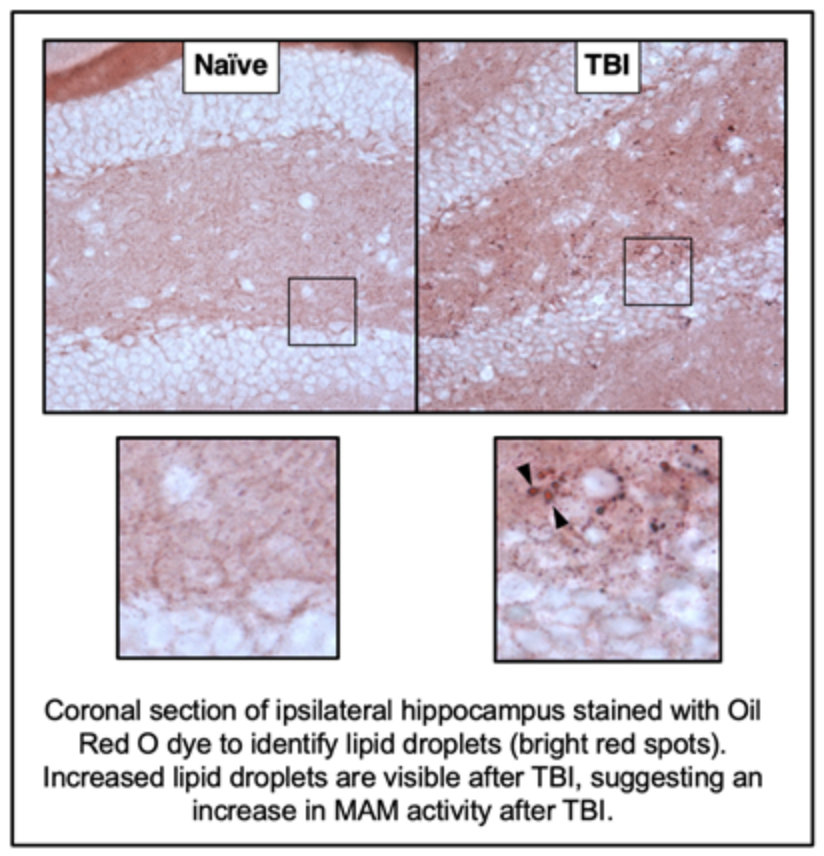
 In collaboration with the labs of Dr. Richard Deckelbaum and Dr. Steven Kernie, our lab has recently begun studying traumatic brain injury (TBI) as an environmental cause of Alzheimer’s Disease (AD). The correlation between repeated brain injury and dementia later in life is well established, but the molecular mechanism that links the two diseases has not been determined. Our group has observed MAM functionality to be consistently altered in multiple cellular and animal models of AD (Area-Gomez et al., 2012). Of note, upregulated activity of MAM-resident enzymes occurs prior to the manifestation of canonical AD markers such as amyloid-β plaques and tau tangles. Given MAM’s role as a sensor of cellular lipid homeostasis and coordinator of cellular lipid metabolism, lipidomics analysis offers insight into MAM activity levels. Preliminary lipidomics studies in a mouse model of TBI point to an upregulation of MAM functions after brain injury. The goal of this project is to follow up on these studies and characterize MAM activity levels in TBI through biochemical activity assays and imaging-based approaches. We also have ongoing studies aiming to recapitulate alterations in APP metabolism observed in AD models. Eventually, we hope to determine whether genetic and environmental causes of AD converge on a mutual upregulation of MAM functions.
In collaboration with the labs of Dr. Richard Deckelbaum and Dr. Steven Kernie, our lab has recently begun studying traumatic brain injury (TBI) as an environmental cause of Alzheimer’s Disease (AD). The correlation between repeated brain injury and dementia later in life is well established, but the molecular mechanism that links the two diseases has not been determined. Our group has observed MAM functionality to be consistently altered in multiple cellular and animal models of AD (Area-Gomez et al., 2012). Of note, upregulated activity of MAM-resident enzymes occurs prior to the manifestation of canonical AD markers such as amyloid-β plaques and tau tangles. Given MAM’s role as a sensor of cellular lipid homeostasis and coordinator of cellular lipid metabolism, lipidomics analysis offers insight into MAM activity levels. Preliminary lipidomics studies in a mouse model of TBI point to an upregulation of MAM functions after brain injury. The goal of this project is to follow up on these studies and characterize MAM activity levels in TBI through biochemical activity assays and imaging-based approaches. We also have ongoing studies aiming to recapitulate alterations in APP metabolism observed in AD models. Eventually, we hope to determine whether genetic and environmental causes of AD converge on a mutual upregulation of MAM functions.

